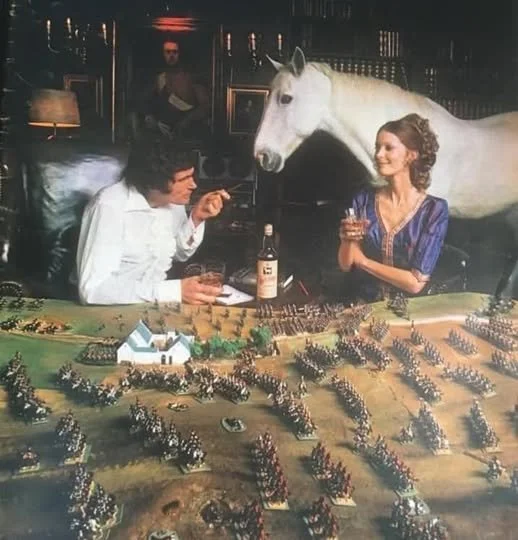Two Games of To The Strongest
/Another two lockdown games of To The Strongest with Daughter#1’s boyfriend, who is staying with us for the duration.
This time we ditched any pretense of involving the distaff side of the family: leaving them to watch The Queen’s Corgis on Netflix or Amazon or one of the other multiple streaming services that we seem to have adopted over the past few months, as we men got down to some serious gaming.
As this was our third session of TTS, I wanted K. to experience something a little different to the largely “deep units on both sides” games that we’d been playing so far. I therefore mocked up a Sarmatian army from my Sassanid Persians: four units of veteran heavy cavalry with lance and bow represented by cataphracts (represented by, not counting as!) and four units of standard heavy cavalry with lance and bow represented by clibinarii. There was also a unit of horse archers in there somewhere too.
K would take a Syracusan army: a core of four Hoplite units, one bodyguard; a mercenary command with a couple of units of Celts; and then a sprinkling of light infantry and raw cavalry to add flavour. It was, I explained, the first time that the Cretan Archers (see post from a couple of days ago) had been on the tabletop, so he was to expect them to perform extremely badly indeed!
“Why are all your men on that side of the battlefield?”
We deployed our troops, and K immediately noticed that I had heavily weighted my left flank, leaving many of his units with an open battlefield in front of them. He queried why I had done so, and I kindly explained that he would find out in a few minutes.
The reason, of course, was that I was going to try and smash his weak right flank to pieces and then wheel round and roll up his line like a yoga mat before his slow, left-flank units could get in on the action.
The first phase of my plan went, well, according to plan: one command of veterans and one command of standard cavalry did indeed clear K’s right flank from the table, leaving things looking like this:
Tough love!
Some of you might suggest that it was perhaps a little harsh of me to take advantage of the lad’s inexperience in this way, but I did explain exactly what I had planned and what I thought was going to happen as I did it: making sure that he would understand what was going on and be able to either counter or employ the same tactic in the future.
Back to the battle.
As a command of clibinarii duly held off his rampaging Celtic mercenaries, my cavalry duly wheeled round and, in text book fashion, slammed into his flank and, in one unit’s case, went for his camp.
Cretan Archers fulfilling their first-game destiny
Syracuse has fallen!
K began shedding victory coins right, left and centre, and the day was soon mine.
Game Two
As that game hadn’t taken very long, we swapped sides and prepared to do battle again.
I was expecting K to try and copy my refused flank tactic of last time, so determined that I would use an advance in echelon tactic to try and disrupt his plans. As it happened, K deployed his men evenly over his side of the table, so after I had made my first move, the battlefield looked like this:
On his right flank, K advanced his cavalry forward to meet the two units of Celts coming towards him over the hill. This left his horse archers to hold off the mercenary Greek cavalry coming through the pass.
This turned out to be a bit of a mistake as, admittedly with a bit of luck, my cavalry rapidly dispersed his light horse and found themselves in a fantastic position on the flank of one of his commands.
By rights, his horse should have been able to turn to face me, and then a normal face-to-face combat would have occurred, but K managed to draw not one, not two, but three Aces in succession for activation: his horse weren’t moving anywhere!
By rights, I should then have been able to crash into his flank and roll up both units rather pleasingly before going on to sack his camp: seven of his nine victory coins should have been mine. Again, however, a weird series of cards meant that his cavalry, although they wouldn’t turn to face me, were able to hold me off for the duration of all his Aces. I did eventually destroy both units, but not before events on the rest of the field decided the day.
Battle was then generally joined across the rest of both lines, with K’s lance armed cavalry attacks compensating for the depth of my foot units.
the first cut is always the deepest!
I kept expecting my horse to roll up his cavalry and win the game but, as I said above, it kept failing to happen, and gradually my foot units began to lose the day. A lost general sealed my fate, and the turn after my horse had finally rolled up those cavalry at the back, I lost one victory coin too many and the day was K’s: a grinding triumph for the Sarmations.
K was naturally chuffed to bits to get his first victory. The only thing that now puzzles me is where he’s going to sleep tonight…










